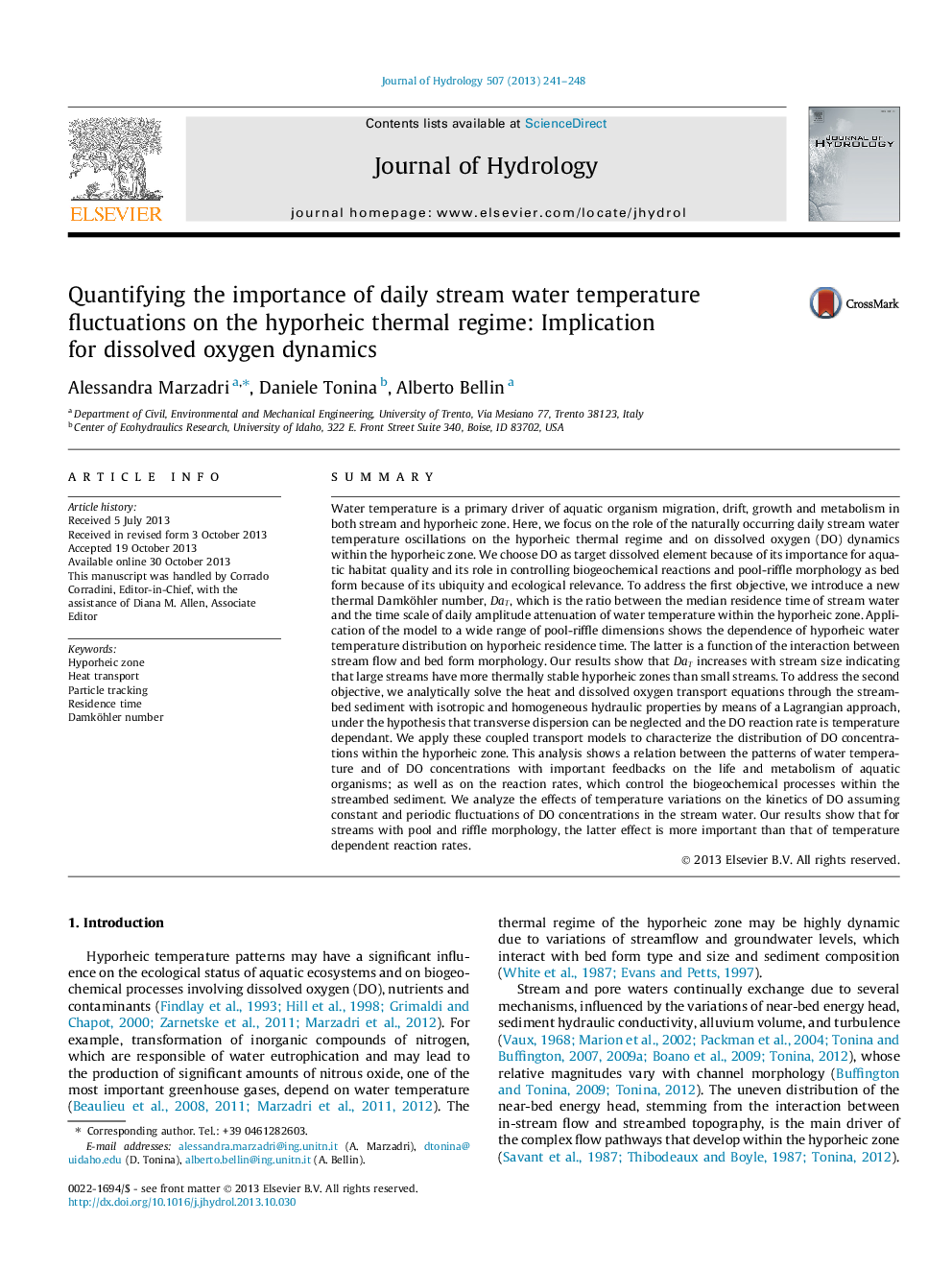| کد مقاله | کد نشریه | سال انتشار | مقاله انگلیسی | نسخه تمام متن |
|---|---|---|---|---|
| 4576135 | 1629941 | 2013 | 8 صفحه PDF | دانلود رایگان |

• We model the heat transport in the hyporheic zone by using a Lagrangian approach.
• We examine the role of the stream water temperature on hyporheic thermal regime.
• We examine the role of hyporheic thermal regime on dissolved oxygen (DO) kinetics.
• Via a thermal Damköhler number we relate stream morphology and temperature signal.
• We show the impact of temperature variation on the evolution of DO concentration.
SummaryWater temperature is a primary driver of aquatic organism migration, drift, growth and metabolism in both stream and hyporheic zone. Here, we focus on the role of the naturally occurring daily stream water temperature oscillations on the hyporheic thermal regime and on dissolved oxygen (DO) dynamics within the hyporheic zone. We choose DO as target dissolved element because of its importance for aquatic habitat quality and its role in controlling biogeochemical reactions and pool-riffle morphology as bed form because of its ubiquity and ecological relevance. To address the first objective, we introduce a new thermal Damköhler number, DaTDaT, which is the ratio between the median residence time of stream water and the time scale of daily amplitude attenuation of water temperature within the hyporheic zone. Application of the model to a wide range of pool-riffle dimensions shows the dependence of hyporheic water temperature distribution on hyporheic residence time. The latter is a function of the interaction between stream flow and bed form morphology. Our results show that DaTDaT increases with stream size indicating that large streams have more thermally stable hyporheic zones than small streams. To address the second objective, we analytically solve the heat and dissolved oxygen transport equations through the streambed sediment with isotropic and homogeneous hydraulic properties by means of a Lagrangian approach, under the hypothesis that transverse dispersion can be neglected and the DO reaction rate is temperature dependant. We apply these coupled transport models to characterize the distribution of DO concentrations within the hyporheic zone. This analysis shows a relation between the patterns of water temperature and of DO concentrations with important feedbacks on the life and metabolism of aquatic organisms; as well as on the reaction rates, which control the biogeochemical processes within the streambed sediment. We analyze the effects of temperature variations on the kinetics of DO assuming constant and periodic fluctuations of DO concentrations in the stream water. Our results show that for streams with pool and riffle morphology, the latter effect is more important than that of temperature dependent reaction rates.
Journal: Journal of Hydrology - Volume 507, 12 December 2013, Pages 241–248